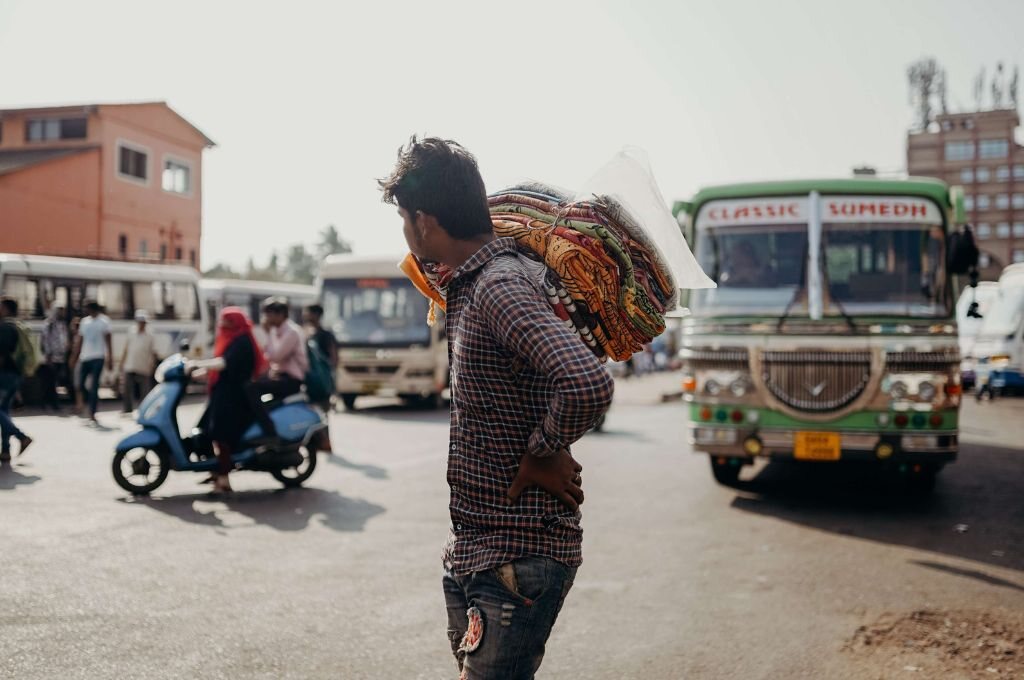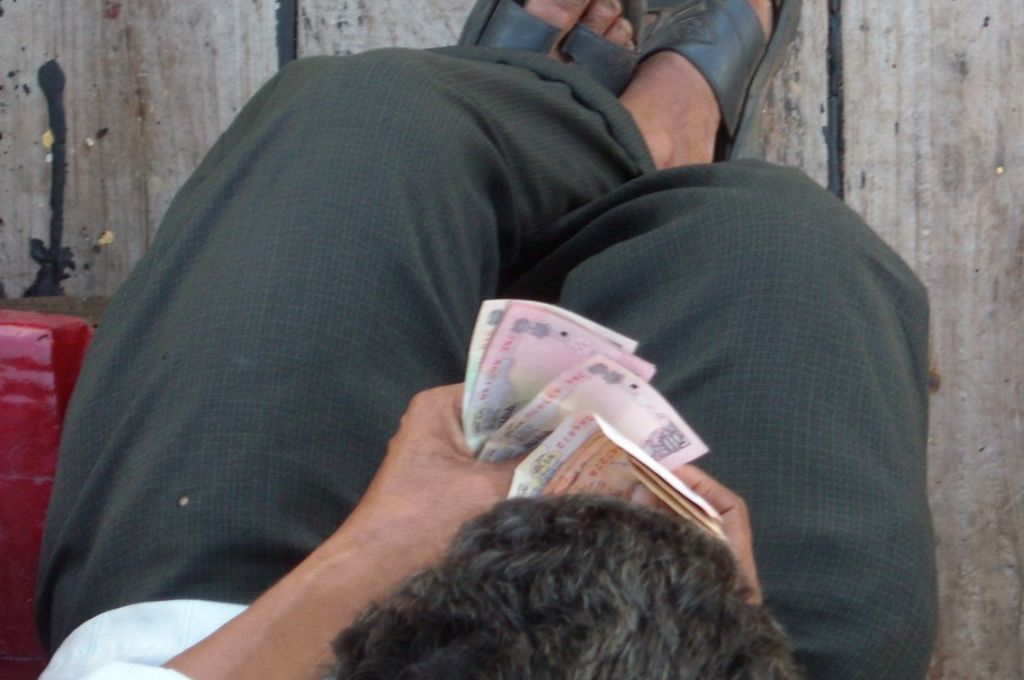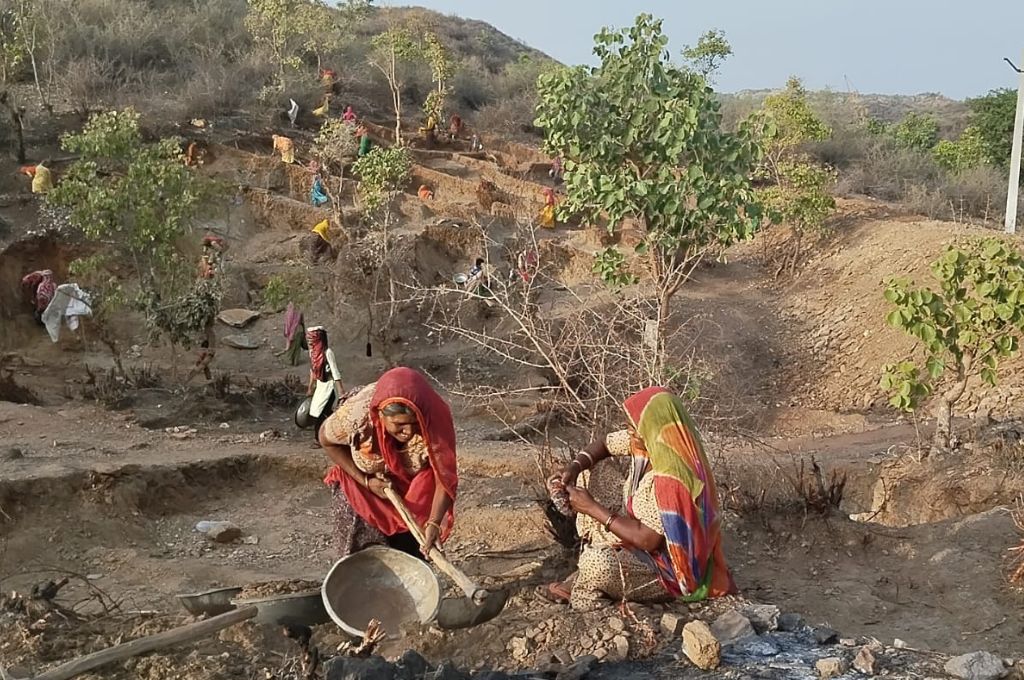The Mahatma Gandhi National Rural Employment Guarantee Act (MGNREGA), 2005, sees employment as a right—legally binding the government to provide employment within 15 days of an official claim. Being a demand-driven programme, it is designed to act as an insurance mechanism against shocks such as the pandemic, which put it through a gruelling test. In November and December 2021, Azim Premji University conducted a survey in partnership with the National Consortium of Civil Society Organisations on NREGA and Collaborative Research and Dissemination (CORD) to determine the role of MGNREGA in providing support to vulnerable households during the pandemic.
Two thousand households were surveyed across eight blocks in four states—Bihar, Karnataka, Madhya Pradesh, and Maharashtra—using a sampling method that ensured that findings would be representative of all job card–holding households in each block.
The study analysed MGNREGA on the following factors: overall impressions of the programme among job card–holding households, extent of unmet demand, wage payments, changes in programme functioning during the pandemic, and effectiveness of MGNREGA as a safety net. The study found that approximately 39 percent of all job card–holding households interested in working under MGNREGA did not get a single day of work in 2020–21, the first year of the pandemic. Also, on average, only 36 percent of households that worked received their wages within 15 days in the same year.
Despite these shortcomings, the findings revealed that MGNREGA made a marked difference during the pandemic, protecting the most vulnerable households from significant loss of income. Increased earnings from MGNREGA compensated for somewhere between 20 and 80 percent of income loss across the blocks surveyed.
“Our study shows how much the workers value the need and utility of MGNREGA. More than eight out of 10 households recommended that MGNREGA should provide 100 days of employment per person per year. We also find a massive extent of underfunding. A conservative estimate yields that the allocations in the surveyed blocks should have been three times the amount that was actually allocated in the year after lockdown to fulfill the true extent of work demand,” notes Rajendran Narayanan, co-author of the study and faculty member at Azim Premji University.
Ashwini Kulkarni of the NREGA Consortium says, “One of the objectives of MGNREGA is as a social protection measure during distress times. The pandemic and subsequent lockdown created unprecedented distress and MGNREGA, as expected, rose to the need, and provided work for many more villages and many more households than in the preceding years. MGNREGA’s role for reducing vulnerability has been re-emphasised and continues to be of vital importance in post-pandemic times. Civil society organisations have the responsibility to convey voices of the people to the policymakers to fine-tune the implementation process—this report is an effort in this regard.”

Key findings
- Across all blocks, roughly 39 percent of all the job card–holding households interested in working in MGNREGA in FY 2020–21 could not get a single day of work, while on average they wanted 77 days of work.
- Among households that found some work, the unmet demand (difference between the number of days desired and number of days of work received) across all blocks was 64 days.
- As per the MGNREGA Management Information System (MIS), the total amount spent on labour in the surveyed blocks in FY 2020–21 was INR 152.68 crore. As per our conservative estimate, to fulfil the true demand for work in these blocks, the allocated labour budget should have been INR 474.27 crore—more than three times the amount actually spent on wages.
- The most frequently mentioned reason for not getting as much work as needed, across all blocks, was lack of sanctioned/opened work. On average, 63 percent of all job card–holding households cited this reason in the surveyed blocks.
- On average, only 36 percent of all households that worked in 2020–21 got their wages within 15 days.
- For households that found work in both the periods (pre COVID and during COVID), increased earnings from MGNREGA compensated for somewhere between 20 and 80 percent of income loss depending on the block.
- For households that had not worked in the pre-COVID year but did find work during the COVID year, MGNREGA earnings compensated for anywhere between 20 and 100 percent of income lost from other sources.
- More than eight in 10 households recommended that MGNREGA should be made available for 100 days per person per year. Three out of five households said that MGNREGA contributed positively to overall development in their village.
- Despite low wages and payment delays, MGNREGA clearly made a difference during the pandemic, insuring some of the most vulnerable households against income losses. But it fell quite a bit short of fully protecting households because it either did not meet their demand or completely excluded them from the programme.
Recommendations of the study
- Massive expansion of the programme is needed to deal with the high work demand. Increase the number of administrative personnel by at least doubling the field functionaries.
- Increase the shelf and scope of permissible works and prioritise community works over individual asset creation to absorb more unmet demand.
- Ensure that computerised receipts are given to workers for work demanded.
- Update job cards with work done, wages earned, and so on. In addition to manual updating of information on job cards, equip each panchayat with a job card–printing facility similar to passbook updation facilities in banks.
- Make sure wage slips with details of wages and work are printed and provided to workers after funds transfer orders (FTOs) are generated.1
- In compliance with the act and Supreme Court orders, ensure that compensation for wage payment delays is paid for the full extent, that is, till wages are credited to the workers’ accounts.
- Prominently display a ‘Know Your Rights’ concerning MGNREGA and banking rights in public places.
- Ensure that the seven registers are manually maintained in every gram panchayat.2 This can help in keeping track of the parity between the workers’ experience and the information on the MIS.
- Increase MGNREGA wage rates to at least the state’s minimum wage or INR 375 per day as recommended by the Anoop Satpathy Committee in February 2019.
- Ensure that the gram panchayats get funds in advance and have more authority in sanctioning works. This will ensure that the mandate of the 73rd constitutional amendment is honoured and work is available on demand.
- Ensure social audits are strengthened with timely and adequate funds. Bring every agency involved—including payment intermediaries such as banks, National Payments Corporation of India, and UIDAI—within the ambit of social audits, with clear penalty norms in case of violations.
Unmet demand and delays in wage payments have been an area of persistent concern. MGNREGA is a powerful tool to combat it by providing income security to India’s most vulnerable households while aiding overall village development and empowering communities. To achieve these goals effectively, there is an imminent need to increase its allocation significantly, increase government accountability, and avoid technical fixes for structural matters.
—
Footnotes:
- FTOs are generated by the implementation agency (gram panchayat/block) after due verification of the work to transfer wages directly into the beneficiary account.
- The seven registers contain information pertaining to job cards (application, registration, and issue), household employment, gram sabha (meeting and social audit) minutes, demand, allocation and registration of work, payment of wages, complaints and materials.
—
Know more
- Learn more about the challenges that NREGA workers face when they try to access their wages.
- Read about the evolution of NREGA since it was first passed in 2005.
- Read more about the performance of NREGA during the pandemic.






